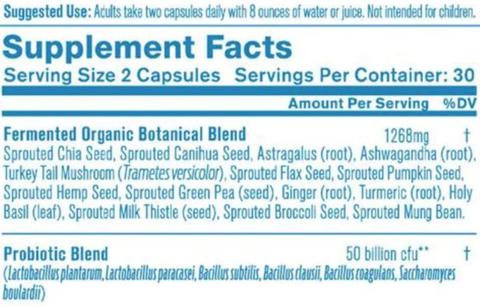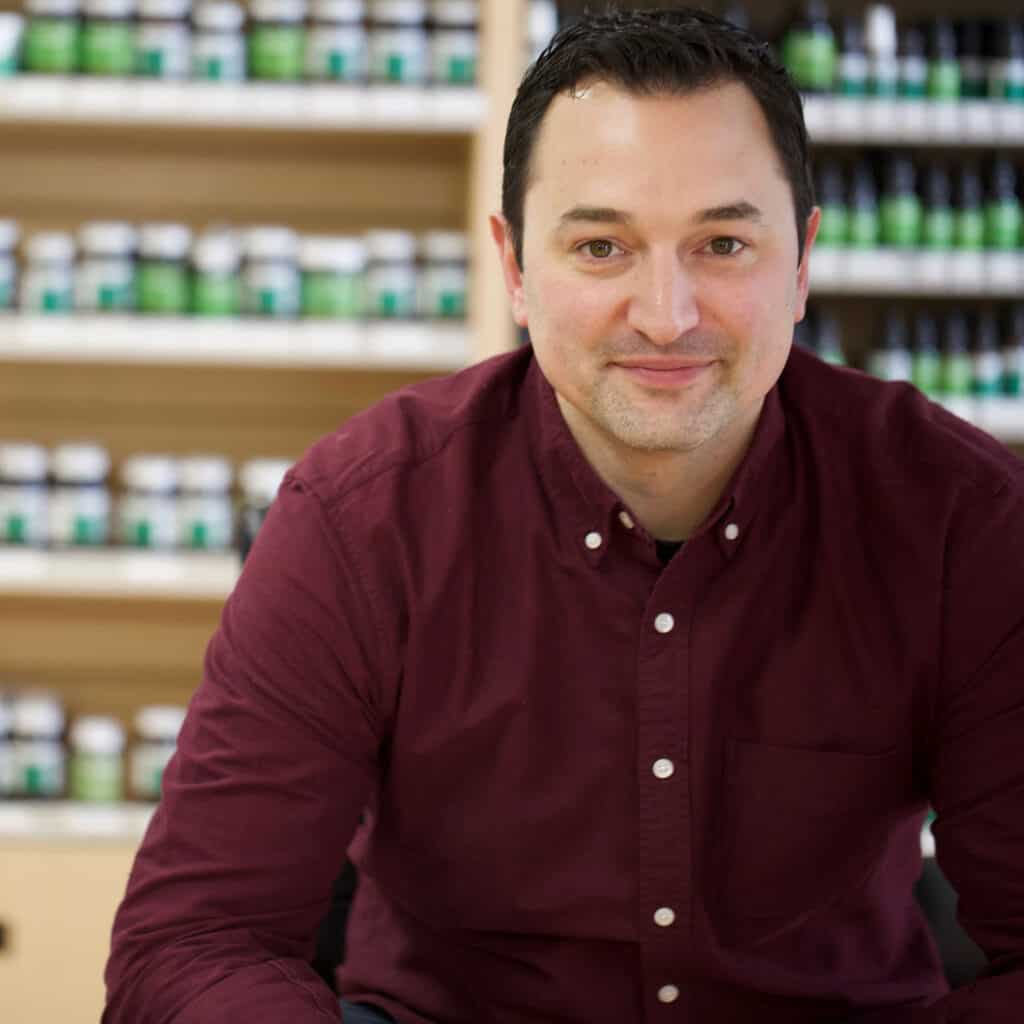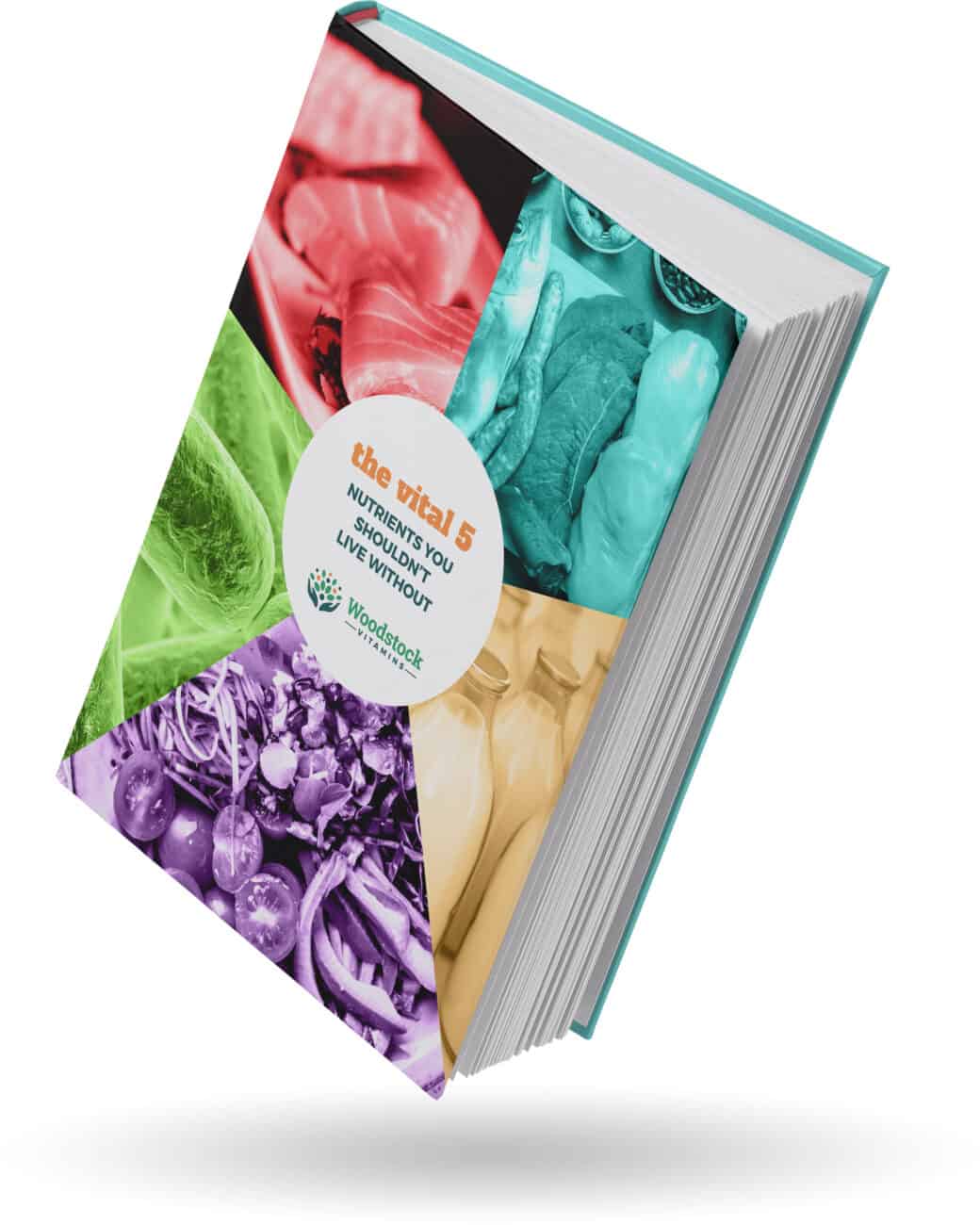The newest trend in probiotics breaks a rule your mom set for you when you were about 2 years old. It’s not “don’t fill up on Doritos and ice cream for breakfast” nor is it “always respect the President.”
It’s much less complex and more obvious: “Don’t eat dirt.”
Internet doctors are peddling bacteria found in soil as the missing link between what you are now and what everyone thinks you should be.
If using bacteria found in the ground sounds weird and a bit gross, you are right. That instinct is not only natural, it’s probably evolutionary.
There’s a reason why your ancestors made it and their knuckle-dragging cousins did not. It was probably because they were afraid to eat dirt, among other things.
That doesn’t stop these “experts” from writing some convincing a** copy on their websites proclaiming it as THE answer to all things our GI tubes need.
Let’s explore all there is to know about soil based probiotics. You probably already know where I’m going with this – soil bacteria is NOT a good idea – but we should talk about WHY they are promoting it instead.
Let’s get dirty.
Soil Bacteria 101
When we think of probiotics, we think of guts, not dirt. Here’s my super awesome analogy to help you understand probiotics (if you missed it when we first introduced it):
Your gut is like real estate. Location location location! To make property values in a township go up, you need great neighbors, some law enforcement, and you definitely need your seedy neighbors need to be controlled.
If for some reason the cops and good neighbors are chased away, the bad neighbors start putting their cars over their lawns and mucking up the place. Eventually, you have Detroit (just kidding Detroit – we’re rooting for you!).
Probiotics are a steady stream of cops and good neighbors to your town or city. By reinforcing the beneficial microorganisms of the gut, we can have a multitude of health benefits, starting with bowel regularity, going all the way up to immune system support.
Not all probiotics are equal, and in fact most of them don’t work. But a well made probiotic will contain strains with evidence supporting their use, in a dosage that will survive the harsh environment of the upper GI tract.
When we use traditional probiotics, we are introducing neighbors and cops. People. People that live in houses, drive cars, etc.
When we use soil bacteria, it’s like moving a bunch of sharks to your neighborhood. I mean sharks are good people, but they are normally not found in houses. They can be mean at times. Especially if they aren’t in their normal environment, they’ll act out.
Why would we put sharks there? It doesn’t make sense! Real estate experts DEFINITELY agree with my thought process. I mean, sharks could technically be helpful, right? I’d think twice about not taking out my recycling. They’re most likely not going to bite anyone. But they COULD bite someone.
Probiotics that use soil bacteria are introducing bacteria from the dirt, not guts, to your gut. These strains are not a typical part of the human biome.
They argue that because these strains are ubiquitous – they’re found in the air, water, and dirt – that it’s “natural” for us to have some soil bacteria presence in and on us. While true, I’d argue that they are more contaminants to the GI tract than they are normal residents. They’re transient drifters.
I don’t know if life was better in prehistoric times when we consumed more dirt (if we did). If it was better then, I don’t think that the soil bacteria we incidentally ingested was the reason. It was probably because there was no social media.
Let’s dig in a bit more about why I’m so weirded out by soil bacteria.
The Dirty Dozen
The specific type of bacteria used in soil based probiotics is Bacillus bacteria. There are varied species
of Bacillus. Let’s talk about the troublemakers first:
- Bacillus cereus – can cause spoilage in canned foods, leading to food poisoning
- Bacillus anthracis – can cause anthrax. Yes, that anthrax.
- Bacillus thuringiensis – also known as Bt. It’s a pesticide that was thought to be connected to killing the butterflies and bees, but most of the literature says it is not to blame.
I’m cherry picking to bring dramatics to the conversation. There are 266 named species of Bacillus bacteria, with quite a few of them that are trouble makers.
Bacillus strains, as a group, have traditionally been regarded as pathogens. They don’t BELONG in guts. They’re there, though, and that’s generally fine.
Most people won’t get sick from them unless the exposure is high or the person’s immune system is quite weak. There are numerous case studies to support this.
The most common species used as a soil bacteria probiotic is Bacillus coagulans. Being objective, I’m sure it’s fine. I KNOW there are specific strains of Bacillus coagulans with data to support their use for treating specific gut diseases. I just don’t get why it’s being discussed as an option.
Besides generally being regarded as pathogenic, one of the big problems with Bacillus strains has to do with their survivability.
S’Mores Are Better Than Spores
Bacillus are the cockroaches of the microbial world. They are spore forming bacteria. This means that if the environment gets unfavorable, the bacteria strips itself down and folds itself into its cell wall and then fortifies it to make it resistant to, well, everything.
Extreme heat and cold, chemicals, radiation… Even their own off-color tweets from 5 years ago – and no one is resistant to that! Bacillus bacteria can survive it all.
As spores, they can lay dormant for a while. A while like 10,000 years in some cases and as long as 250 MILLION!! years in one reported case.
The internet “gurus” tout this as a benefit. “Soil bacteria can survive the harsh environment of the gut.” Big deal. We don’t want it to just survive.
We want it to be alive and thrive, performing various functions like maintaining fluid and electrolyte balance, helping metabolize nutrients, and most importantly, keeping bad bacteria in check.
If it’s going to clam up or go into its turtle shell at the first sign of an unpleasant environment, it’s going to be no help to us. It’s not good enough that strains found in a probiotic just show up, they have to actively participate in a symbiotic manner.
My cousin shows up on moving day but spends all day on the phone and not lifting couches. I’m sure that would upset you too.
One of the big concerns is that Bacillus bacteria are pretty good at transferring their genetics onto other microorganisms. It’s been well documented that Bacillus bacteria have transferred antibiotic resistance to other bacteria. What if they transfer this to something like C. diff or E. coli? We might be in trouble.
Even if these things aren’t a major clinical problem a majority of the time, they are a problem. But from a more logical place, there are enough reasons to want to shy away from soil based probiotics.
3 Reasons I Hate Soil Based Probiotics
My honest, conservative approach to using the right Bacillus bacteria as a probiotic is simply, “Meh.”
It’s probably fine. You’re not going to die. Well, you are, eventually. But not because of the soil probiotic.
1. Most probiotics aren’t made correctly.
**IF** a soil bacteria probiotic is done correctly, it probably will be fine. Big if. We’ve talked about probiotic quality before, but here’s a quick recap.
First, the benefit of probiotics are STRAIN SPECIFIC. What does that mean? Well, let’s use another awesome analogy!
When we say something like Lactobacillus, it’s like talking about the company Honda. They make cars, trucks, vans… even lawnmowers.
We have studies showing that the 2018 Honda Civic EX confers some benefit to human digestion. We wouldn’t want a lot full of all the products that Honda makes. We’d want a lot with JUST that specific model.
Your probiotic product should be labeled with the specific strain name. Not just Lactobacillus. That’s like saying “Honda.” You’ll get lawn mowers, trucks, not just the Civic we’re looking for.
If it says Lactobacillus acidophilus, we’re getting close, but that’s like saying “Honda cars.” It should say something like Lactobacillus acidophilus NAS.
When you see a probiotic listed with just the genus and species, you are getting a mixed bag with varied doses of strains – some of which may not even have a health benefit.
I haven’t seen a soil bacteria product that lists exactly what strain of Bacillus coagulans they are using. It should say Bacillus coagulans GBI-30 or Bacillus coagulans 6086.
We’d want it to survive the harsh environment of the gut and actually colonize. How do we know if that happens? Clinical data. Lab studies can give us a simulation of survival, but we need studies to really see if those properties translate to the complex human body.
The doses need to be appropriate. People look for billions upon billions of CFU, or colony forming units. This is the way we measure the “strength” of the probiotic. In ‘Muricah, more is better.
That’s not always the case; high potency strains will require less doses. Some strains are like tanks, some are like archers. BUT, we also have to have ENOUGH CFU. Some products have far too little. Hundreds of millions of CFU seems like a lot, but it isn’t.
Another trick: manufacturers will list the amount of CFU at the time of manufacture, not through expiration. What time? Before everything was processed? After it was done? That number is misleading; CFUs will die off naturally, especially if proper packaging protections aren’t in place – heat, moisture, and light will degrade any product over time.
How do we know how many strains will exist in the final product on the last day of expiration?
Surprise suprise, many probiotics labeled with “time of manufacture” have well below therapeutic levels by the time expiration comes along.
There’s a lot more here to unpack, but that’s more than enough for a non-supplement nerd to have to make smarter probiotic decisions.
Of the soil bacteria probiotics I’ve vetted, even superficially, I don’t have evidence that they would meet or exceed our standards for quality products.
2. Are we washing our food or not?
The people promoting soil bacteria probiotics tout the connection to nature. “Way back when, you would get some soil remnants on your food!” “We have these strains in our guts because they are everywhere, so they must be good!”
Sure, I’d argue that soil quality 400 years ago was a bit different before mega corporations started dumping their chemicals into the water supplies and fields.
But we’re not in those times right now. And yes, there wasn’t as aggressive cleaning of our produce, I’m sure. It doesn’t mean that way of life is superior or even relevant.
Most of us make a part time job of cleaning our produce. We don’t want pesticides, herbicides, or transient microorganisms on our fruits and veggies. There’s natural, then there is craziness.
If you claim that it’s more natural to have some soil bacteria in your body because of “how things were”, Dr. Internet Face, you missed the first point I just made and should go back to supplement school. Random Bacillus bacteria is a mixed bag of strains – some that could be pathogenic, and many that would have no health impact at all.
These concepts are silly and are just trying to appeal to the false narrative that things were better before. #MakeDirtGreatAgain. Things weren’t “better before” – things are better now. That’s what happens!
We learn, advance, grow. While there are many areas we need to slow down or take a more sustainable path, overall life is better now than before.
We don’t need to eat like hunter gatherers, nor do we have to lower our threshold for what is acceptable for cleanliness – especially with our advanced understanding of chemical and microbial contamination.
3. There are plenty of great gut bacteria strains.
Here’s my big point (which is echoed by people like Natasha Trenev, founder of Natren and lifelong probiotic researcher): why the HECK do we need soil bacteria when there are so many good HUMAN strains?
The industry is JUST starting to understand the strain-specific nature of probiotic benefits. We understand microbes like Lactobacillus or Bifidobacterium pretty deeply.
There’s a bunch of evidence in various GI diseases showing benefits of human-specific strains. These bacteria are pretty much found ONLY inside of guts, not on the inanimate objects surrounding us.
What POSSIBLE justification would we have to start using soil bacteria to make probiotics, in light of all the points a non-probiotic expert such as myself can understand with a semi-deep reading of the literature?
Ready? It’s a big surprise. You won’t see this coming!
PROFIT.
Cash Rules Probiotics Around Me
The reason these personalities are coming forward with their convincing words, videos, blog articles and more about soil bacteria is because it is a method to create a niche market in a hyper-competitive space. Period. The end.
How does Woodstock Vitamins make a unique probiotic? There’s little we can do, honestly. There are a finite number of strains, so there are many products that kinda look like something we can offer.
We have to go blue in the face explaining the science and talk about quality, educating people about how our product is superior to something that, to the untrained eye, looks the same.
Not so when you create a new demand.
Just look at a label of a popular soil bacteria product sold by an internet doctor:

Let’s start at the probiotic blend. I’ll give 5 points for everything you point out – go!
- The strains are not labeled correctly. Which specific strains are used?
- Proprietary blends are not a deal breaker, but they should be a warning sign. Proprietary blends protect the manufacturer from divulging their secret recipe, and if intentions are pure, there are doses of each ingredient that are actually significant. But, you could also make the first ingredient 49 billion CFU and the remaining 5 ingredients 1 billion CFU. We’ve even seen it where listed strains are there because they are contaminants; the manufacturer uses improper methods and strains from probiotics they’re making end up mixing with other products.
- The two asterisks after 50 billion CFU go to a note that says “At the time of manufacture.” We already covered that one.
Now, if you look at this other ingredient, the Fermented Organic Botanical Blend, we have a few more problems:
- It’s a proprietary blend, so we know what’s up there.
- The ingredients themselves are marketed as “Prebiotics” but many of them aren’t really rich in prebiotic compounds. In order for a prebiotic to work (as we discussed), you need LOTS of the inulin or arabinogalactin, for example. When we use a blend of foods, we aren’t yielding very much prebiotic compound.
- The 20ish or so ingredients, if added in equally, would be about 20mg of each thing per capsule. That’s a super small amount – not enough to yield much benefit at all. What the heck are these things doing anyway, then?
If you look at this product, especially the “Botanical Blend”, from the eyes of a digital marketer, you can see EXACTLY what’s going on.
Each one of those ingredients are among the most popular and frequently purchased supplements on the market. They show up at the top of keyword searches time and time again.
This means when you look at all the things everyone is googling, Milk Thistle and Chia and Flax come up towards the top.
If you have a product whose ingredients list hits on all of those magic words, when people search for ANY ONE OF THOSE THINGS, your product will show up at the top of the pile.
Super smart, sure. But misleading. Why? Profit.
Too Natural For My Taste
I’ve think I’ve made a strong case for why I believe soil based probiotics are a silly idea. If done correctly, I’d imagine Bacillus bacteria COULD be a reasonable way for someone to get a reasonably functioning probiotic.
Because of the potential liabilities and limited data supporting benefit, we don’t sell nor recommend products that contain soil bacteria such as Bacillus strains.
Our Probiotic Standards, or the list of specifications we expect all probiotic products we sell to meet or exceed, state specifically no Bacillus strains. Does your retailer or Internet Guru have that?
It’s a line we’ve drawn but others are fine jumping over. Why? To create a niche. To gain a foothold in the very lucrative probiotic market. Not to give you the best, but to make money.
So skip past the videos and social media posts promoting soil bacteria.A well made, high potency probiotic is rare out there, but with Woodstock Vitamins, it’s all we’ve got!
Just trying to keep it real…

Neal Smoller, PharmD
Owner, Pharmacist, Big Mouth



